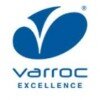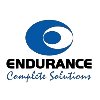Filter interviews by
ZF Steering Gear PPC Engineer Interview Questions and Answers
ZF Steering Gear PPC Engineer Interview Experiences
1 interview found
I applied via Recruitment Consultant and was interviewed before May 2020. There were 3 interview rounds.
Interview Questionnaire
2 Questions
- Q1. How inventory is managed?
- Ans.
Inventory is managed through a combination of software systems and manual processes.
Inventory is tracked using software systems such as ERP or WMS.
Manual processes include physical counts, cycle counts, and audits.
Inventory levels are monitored to ensure optimal stock levels.
Inventory is replenished based on demand and lead times.
Inventory accuracy is crucial for efficient operations and customer satisfaction.
- Q2. There are several t codes through which inventory is managed
- Ans.
There are several t codes used for inventory management.
T-code MB1C is used for goods receipt
T-code MB1A is used for goods issue
T-code MB1B is used for transfer posting
T-code MB1E is used for stock transfer
T-code MB1D is used for reservation
T-code MB1F is used for reversal of goods movement
Interview Preparation Tips
Top trending discussions






Interview questions from similar companies

I applied via Company Website and was interviewed in Oct 2024. There were 2 interview rounds.
(2 Questions)
- Q1. Which machine used?
- Ans.
Various machines are used in engineering, depending on the specific task at hand.
Milling machines are used for cutting and shaping solid materials.
Lathe machines are used for shaping metal or wood by rotating the workpiece against a cutting tool.
Drilling machines are used for creating holes in materials.
Grinding machines are used for finishing workpieces by removing excess material.
CNC machines are computer-controlled
- Q2. What part manufacturers?
- Ans.
Part manufacturers are companies that produce components or parts used in various products.
Part manufacturers specialize in producing specific components or parts.
They often work with engineers to design and create custom parts.
Examples include companies that manufacture screws, gears, circuit boards, etc.
(2 Questions)
- Q1. Semiauto or robotic machine?
- Q2. Minimum and maximum tonnage machine how much?
- Ans.
The minimum and maximum tonnage of a machine depends on its type and purpose.
Minimum and maximum tonnage can vary greatly depending on the type of machine (e.g. hydraulic press, injection molding machine)
For example, a hydraulic press may have a minimum tonnage of 10 tons and a maximum tonnage of 500 tons
It is important to consider the intended use of the machine when determining the appropriate tonnage range

An aptitude test is designed to assess an individual's ability to perform certain tasks or react to a range of different situations. These tests are often used by educational institutions and employers to evaluate potential candidates' skills, talents, and potential for success in a specific role or academic program. Here are some key details about aptitude tests:
1. **Purpose**: Aptitude tests are used to measure a variety of skills, including logical reasoning, verbal ability, numerical skills, and spatial awareness. They help to identify strengths and weaknesses and predict future performance.
2. **Types**:
- **Verbal Reasoning**: Assesses understanding and reasoning using concepts framed in words.
- **Numerical Reasoning**: Tests ability to work with numbers, including basic arithmetic, data interpretation, and logical problem-solving.
- **Abstract Reasoning**: Evaluates the ability to identify patterns, logical rules, and trends in new data.
- **Mechanical Reasoning**: Measures understanding of mechanical and physical principles.
- **Spatial Reasoning**: Assesses the ability to visualize and manipulate objects.
3. **Format**: Aptitude tests can be multiple-choice, true/false, or involve practical problem-solving tasks. They are often timed, with specific sections dedicated to each type of reasoning.
4. **Preparation**:
- **Practice Tests**: Taking practice tests helps familiarize with the format and types of questions.
- **Study Guides**: Reviewing basic concepts in mathematics, grammar, and logical reasoning.
- **Skills Development**: Enhancing skills through puzzles, reading, and other related activities.
5. **Usage**:
- **Recruitment**: Employers use aptitude tests to screen job applicants and find the best fit for a role.
- **Education**: Schools and colleges use these tests for admissions, placement, and identifying areas for student improvement.
- **Career Counseling**: Helps individuals understand their strengths and areas for improvement, guiding career choices.
6. **Scoring**: Scores are typically presented as percentiles, showing how a test-taker compares to a norm group. Higher scores indicate better performance relative to the norm group.
If you have specific questions about a certain type of aptitude test or need preparation tips, feel free to ask!
(2 Questions)
- Q1. Tell me about yourself.Tip: Provide a brief overview of your professional background, focusing on experiences relevant to the job you're applying for. Highlight your key achievements and skills.
- Q2. Know YourselfAssess and interest.
Interview Preparation Tips
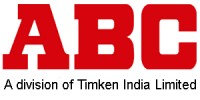
I applied via Job Portal and was interviewed in Apr 2024. There was 1 interview round.
(2 Questions)
- Q1. What is what and what around what
- Q2. Ellame what eppome what
- Ans.
The question seems to be asking about a specific topic or concept, possibly related to engineering terminology or processes.
Try to understand the context of the question and provide a relevant response.
Consider the keywords 'ellame' and 'eppome' for any clues.
If unsure, ask for clarification or provide a general overview of engineering principles.
Interview Preparation Tips

I applied via Company Website and was interviewed in Dec 2023. There was 1 interview round.
(3 Questions)
- Q1. 7 qc tools ,4m change, skill Matrix,5s ,poka yoka
- Q2. Documents work mail ,skin ,
- Q3. 4m change, skill Matrix
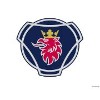
I was interviewed in Sep 2023.

(5 Questions)
- Q1. Scania bus technician
- Q2. Scania bus engine is a very powerfully engine
- Q3. Scania bus is on the very confatable
- Q4. Scania bus is a very advance bus
- Q5. Scania bus on the way very goodsuspension
Interview Preparation Tips
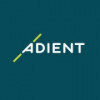
I applied via Naukri.com and was interviewed in Mar 2024. There was 1 interview round.
(1 Question)
- Q1. About current job responsiblty

I was interviewed in Aug 2023.
(2 Questions)
- Q1. Why are you change job ?
- Q2. What is your notice period?
(5 Questions)
- Q1. What is your KPI
- Ans.
My KPI as a Production Engineer is to ensure efficient production processes, minimize downtime, and optimize product quality.
Monitoring and improving production efficiency
Reducing downtime through preventive maintenance
Implementing quality control measures
Optimizing production output
Analyzing and improving production costs
- Q2. How to calculate OEE
- Ans.
OEE (Overall Equipment Efficiency) can be calculated by multiplying Availability, Performance, and Quality percentages.
Calculate Availability by dividing the total operating time by the planned production time.
Calculate Performance by dividing the actual production rate by the maximum production rate.
Calculate Quality by dividing the good units produced by the total units produced.
Multiply the Availability, Performance
- Q3. What is 4M and what is retroactive & prospective
- Ans.
4M is a methodology used in production engineering. Retroactive refers to actions taken after an event, while prospective refers to actions taken before an event.
4M is a methodology used in production engineering that stands for Man, Machine, Material, and Method.
Man refers to the human resources involved in the production process.
Machine refers to the equipment and tools used in production.
Material refers to the raw m...
- Q4. What is base documents of control plan
- Ans.
The base documents of a control plan include process flow diagrams, work instructions, and quality standards.
Process flow diagrams outline the sequence of steps in the production process.
Work instructions provide detailed instructions on how to perform each step of the process.
Quality standards define the criteria for acceptable quality and specify the required inspections and tests.
Other base documents may include con...
- Q5. What is 5W 1H
- Ans.
5W 1H is a technique used to gather information by asking five 'W' questions and one 'H' question.
5W 1H stands for Who, What, When, Where, Why, and How.
It is commonly used in journalism, problem-solving, and project management.
By asking these questions, one can gather comprehensive information about a situation or problem.
For example, in a production engineering context, the 5W 1H questions could be: Who is responsible...
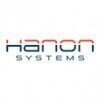
(1 Question)
- Q1. Introducing your self
- Ans. Good morning sir First thank you for giving me this opportunity to introduce myself in front of you may name is araman. i AM from chandauli uttar pradesh i am completed my high school in 2017 and intermediate in 2019 from shri krishna I c Hasanpur chandauli I am completed my ITI in 2021 to fitter branch from shri khadeswari Swami pvt iti kailwar Chandauli my father name is IMTIYAZ my shorts term goal is to get...
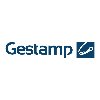
The aptitude round is easy
(2 Questions)
- Q1. They ask me give a self intro
- Q2. They ask hobby , strength and weekness
ZF Steering Gear Interview FAQs
Tell us how to improve this page.
ZF Steering Gear Interviews By Designations
- ZF Steering Gear Maintenance Engineer Interview Questions
- ZF Steering Gear Trainee Production Engineer Interview Questions
- ZF Steering Gear Assistant Manager Interview Questions
- ZF Steering Gear Design Engineer Interview Questions
- ZF Steering Gear Embedded Engineer Interview Questions
- ZF Steering Gear Fire & Safety Supervisor Interview Questions
- ZF Steering Gear Full Stack Web Developer Interview Questions
- ZF Steering Gear Graduate Engineer Trainee (Get) Interview Questions
- Show more
Interview Questions for Popular Designations
- Quality Engineer Interview Questions
- Graduate Engineer Trainee (Get) Interview Questions
- Senior Engineer PPC Interview Questions
- Production Engineer Interview Questions
- Electrical Engineer Interview Questions
- Junior Engineer Interview Questions
- Service Engineer Interview Questions
- Mechanical Engineer Interview Questions
- Show more
People are getting interviews through
Interview Questions from Similar Companies
Fast track your campus placements
ZF Steering Gear PPC Engineer Reviews and Ratings
based on 2 reviews
Rating in categories
|
Senior Engineer
586
salaries
| ₹5 L/yr - ₹22 L/yr |
|
Specialist
284
salaries
| ₹8.4 L/yr - ₹24.6 L/yr |
|
Technical Lead
244
salaries
| ₹10 L/yr - ₹31.5 L/yr |
|
Senior Software Engineer
227
salaries
| ₹7 L/yr - ₹19.1 L/yr |
|
Junior Engineer
150
salaries
| ₹1.8 L/yr - ₹4 L/yr |

Bharat Forge

Samvardhana Motherson Group

Sundaram Clayton

Rane (Madras)
Calculate your in-hand salary
- Home >
- Interviews >
- ZF Steering Gear Interview Questions >
- ZF Steering Gear PPC Engineer Interview Questions


